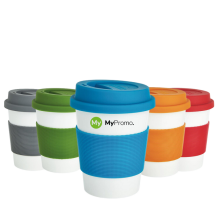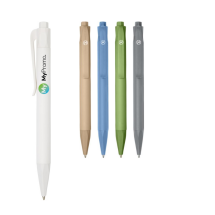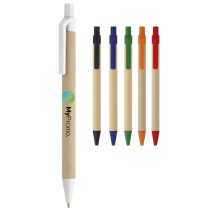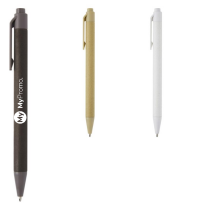PLA
What is PLA?
PLA, or polylactic acid, is a biodegradable thermoplastic made from renewable resources like corn starch or sugarcane. This eco-friendly material is crucial in manufacturing and promotional gifts due to its sustainable nature and versatility. PLA's ability to break down naturally makes it an excellent alternative to traditional plastics, reducing environmental impact and promoting sustainability.
Properties and Characteristics of PLA
PLA is renowned for its biodegradability, breaking down into natural elements under industrial composting conditions. It has a relatively low melting point, making it easy to process using standard plastic manufacturing techniques. PLA is transparent, allowing for clear and aesthetically pleasing products. It also boasts good tensile strength, with the ability to be made either rigid or flexible depending on its formulation.
Applications and Examples of PLA Products
PLA is used across a wide range of applications due to its versatility and environmental benefits. In the packaging industry, PLA is popular for creating biodegradable containers, bottles, and films. Its use in the medical field includes sutures, stents, and drug delivery systems, thanks to its biocompatibility. The 3D printing industry relies heavily on PLA for producing prototypes, models, and even functional parts due to its ease of use and ability to create intricate designs.
In the promotional gifts sector, PLA is often used to manufacture unique, personalized items. Examples include custom 3D printed keychains, personalized eco pens, and reusable bags, all of which can be engraved with company logos or personalized messages. PLA awards and trophies are also popular, offering a distinguished appearance that aligns with sustainable values.
Advantages of Using PLA in Manufacturing
PLA offers numerous advantages in manufacturing. Its biodegradability helps reduce plastic waste and environmental pollution. Being derived from renewable resources, PLA supports sustainability efforts and reduces reliance on fossil fuels. Its versatility allows it to be used in a wide array of applications, from packaging to medical devices. Furthermore, PLA's compatibility with 3D printing technology opens up endless possibilities for custom and complex designs.
Comparison with Other Materials
Compared to traditional plastics like PET or PP, PLA is more environmentally friendly due to its biodegradable and renewable nature. Unlike petroleum-based plastics, PLA does not release harmful toxins when decomposing. However, it has a lower heat resistance compared to some other plastics, which can limit its use in high-temperature applications.
Challenges and Limitations of PLA
Despite its many benefits, PLA does have some limitations. Its lower melting point makes it unsuitable for applications involving high temperatures. Additionally, while PLA is biodegradable, it requires specific industrial composting conditions to break down efficiently, which may not be available everywhere. The cost of PLA can also be higher than conventional plastics, although this is decreasing as production methods improve.
Properties of PLA
| Property | Description |
|---|---|
| Biodegradability | Breaks down under industrial composting conditions |
| Melting Point | Low, making it easy to process |
| Transparency | Allows for clear and attractive products |
| Tensile Strength | Good, can be made rigid or flexible |
What is PLA made from?
PLA is made from renewable resources like corn starch or sugarcane, making it an eco-friendly alternative to traditional plastics.
Is PLA biodegradable?
Yes, PLA is biodegradable under industrial composting conditions, breaking down into natural elements without leaving harmful residues.
What are the uses of PLA?
PLA is used in packaging, medical devices, 3D printing, and promotional products, thanks to its versatility and eco-friendly properties.
How is PLA produced?
PLA is produced by fermenting plant-based sugars to create lactic acid, which is then polymerised into polylactic acid. This material can be moulded into various products.
What are the advantages of using PLA?
PLA offers several benefits, including biodegradability, reduced environmental impact, versatility in applications, and compatibility with 3D printing technology.





